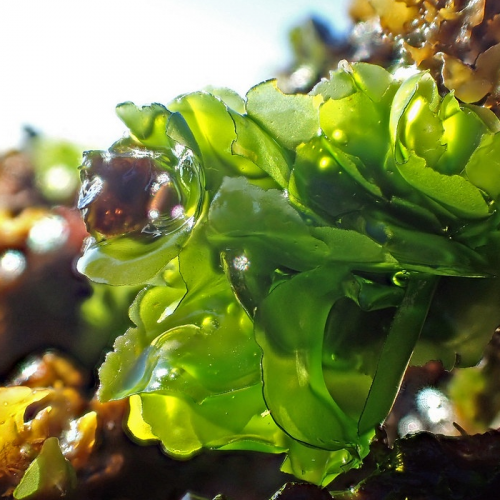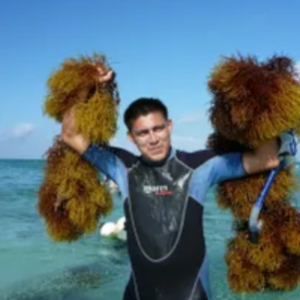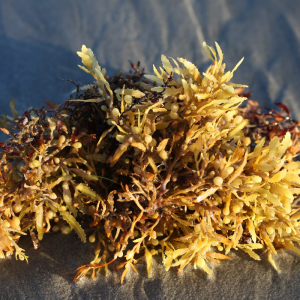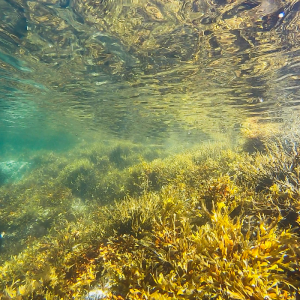
Use Biofilter to Minimize Nitrogen Waste
| Fri, 29 May 2020 - 15:31
The potential of seaweed applications as biofilter in closed aquaculture systems, especially in the recirculation system.
The aquaculture industry has been developing rapidly all over the world, resulting in the consequences of waste water sources that are causing significant impacts on the environment. In particular, Nitrogen and phosphorus are the two main waste components in aquaculture, studies show that only 25-30% of nitrogen, 15-20% of phosphorus is absorbed and most is excreted. environment (FAO, 1992). Recognizing this urgent problem, many environmental policies in aquaculture have been applied worldwide to treat waste water.
Therefore, reusing water is one of the solutions to protect the environment, and besides, farmers can take advantage of waste to create value-added products. By applying the nutrient uptake ability of seaweed species can help solve oxygen problems as well as the accumulation of toxic components in culture systems (Van Rijn, 1996).
Seaweed Ulva prolifera (OF Muller, 1778) is one of the types of seaweed have economic value high, it is reported that Ulva prolifera source of vitamin abundant and particularly vitamin B12 higher than other types of Other seaweeds (Watanabe, 1999). In addition, this seaweed has the ability to absorb and assimilate nutrients in water strongly (Cohen Risa, 2006). Therefore, Ulva prolifera is highly appreciated in exploiting the potential of waste minimization in aquaculture and especially in closed circulating systems.
In this study, seaweed was used as a biofilter in combination with a closed farming system to minimize nitrogen in aquaculture, the subject being Japanese orangefish.
To accomplish this goal, two continuous experiments were performed.
Experiment 1: Two closed scale farming systems have been designed and installed to evaluate the application effectiveness of seaweed. Each system includes aquarium (800L), settling tank (900L) and seaweed culture (200L), the total volume of each system is 1900L.
The fingerlings are naturally sourced, caught and raised directly at Usa Biological Research Institute using synthetic feed. In this experiment, each culture tank was stocked at a density of 22con / m3 with an average weight of 122g / head.
Accordingly, the wastewater from the fish tank is sucked directly from the bottom of the tank and flows through the settling tank to remove solid waste before being pumped to the seaweed tank with a 22L / min pump. Wastewater from the culture tank through the seaweed tank will be circulated back to the aquarium, the cycle is designed about 16 times / day to ensure the amount of waste is removed completely.
The results showed that the addition of seaweed as a biofilter in the culture system effectively reduced the amount of ammonia released from the fish. However, the optimal application of seaweed in closed farming systems as well as combined economic efficiency has not been studied specifically.
In the second experiment, different seaweed densities were tested to find the optimal density when applying this seaweed in the culture system. Thereby, six seaweed densities were tested including 12g / L, 6g / L, 2g / L, 1g / L, 0.5g / L and the control treatment of 0g / L. Water samples were taken every 3 hours after the start of the experiment.
Results measured nitrite or nitrate levels reached in aquarium shows, nitrite and nitrate are absorbed rapidly after the addition of seaweed. Absorption efficiency depends on the density of seaweed cultured. After 6 hours of experiment, more than 80% of nitrite was absorbed at seaweed density from 6 g-12 g / L after 3 hours of experiment, much higher than the lower densities and controls.
Preliminary research results show that the ability of Ulva prolifera to absorb nitrogen emissions such as ammonia, nitrite and nitrate directly helps ensure safe water quality in closed orange orange farming system. copy. In addition, factors such as oxygen and pH content also improved steadily. In addition, the research results also show the potential of seaweed application as a biofilter in closed aquaculture systems, especially in the circulatory system.
Source: Tepbac






















